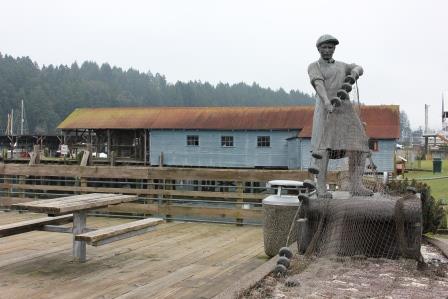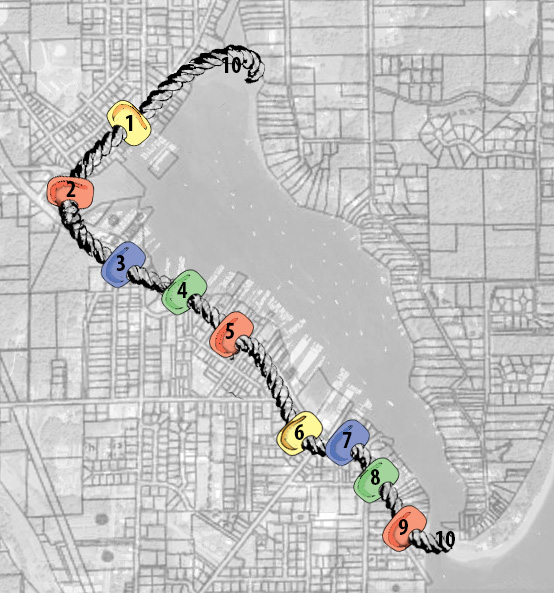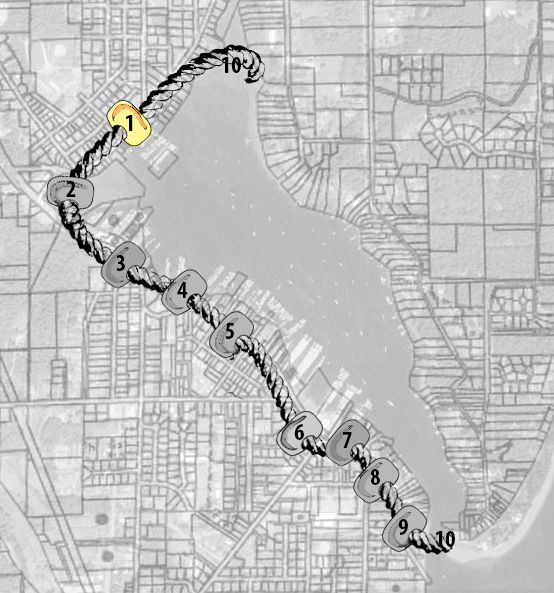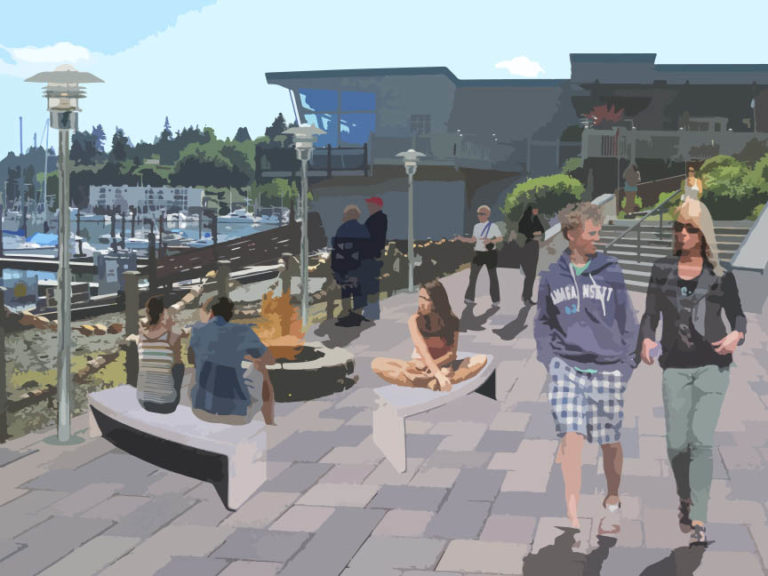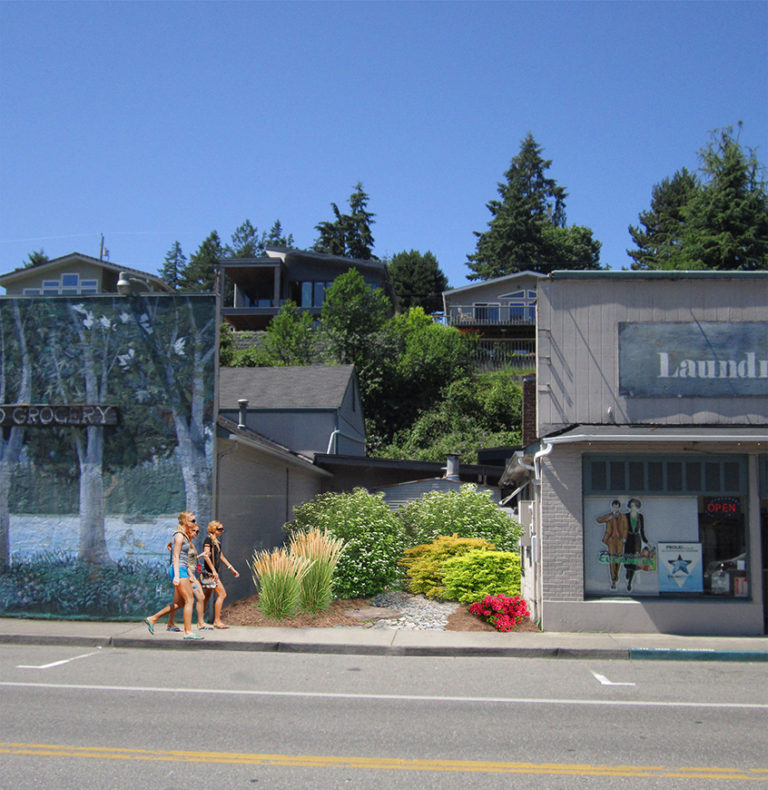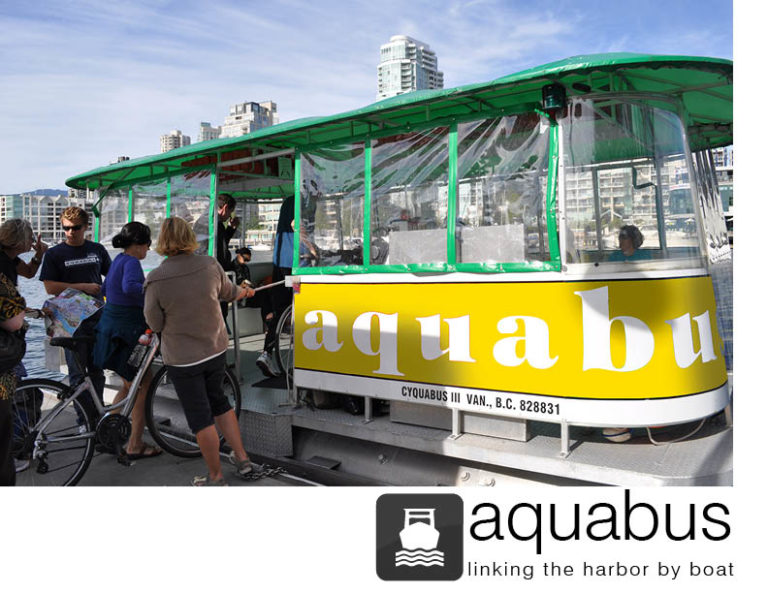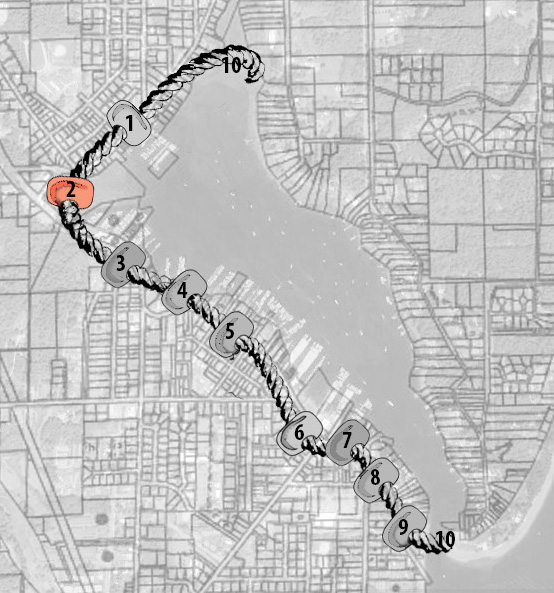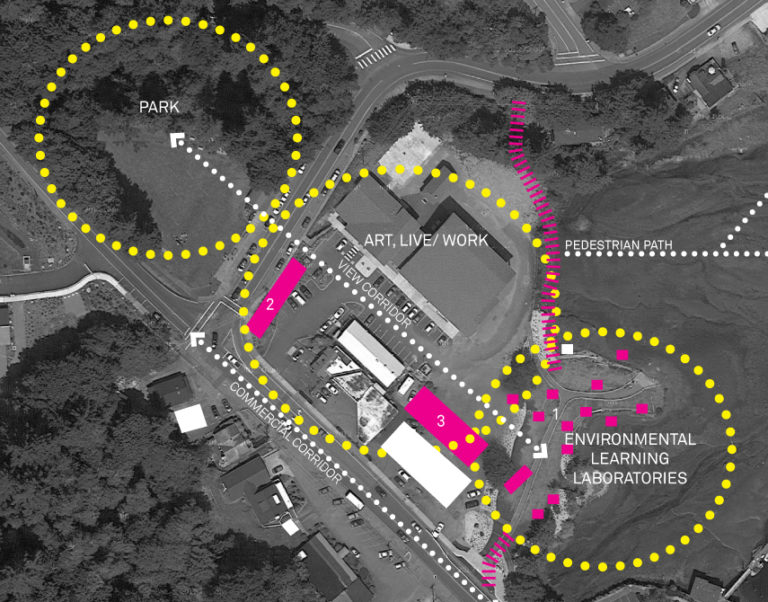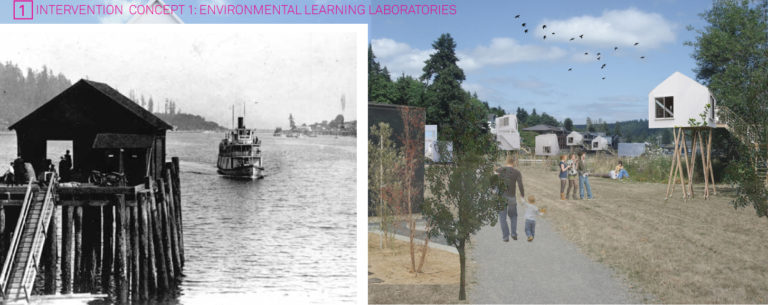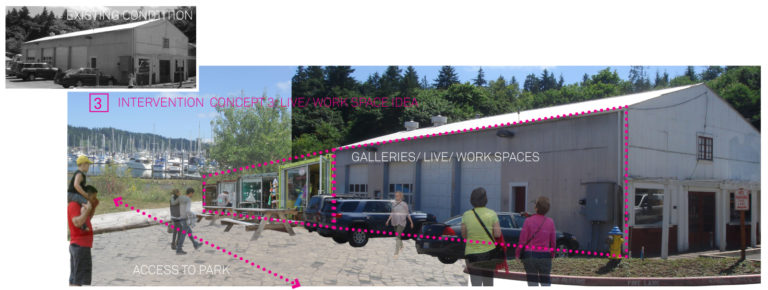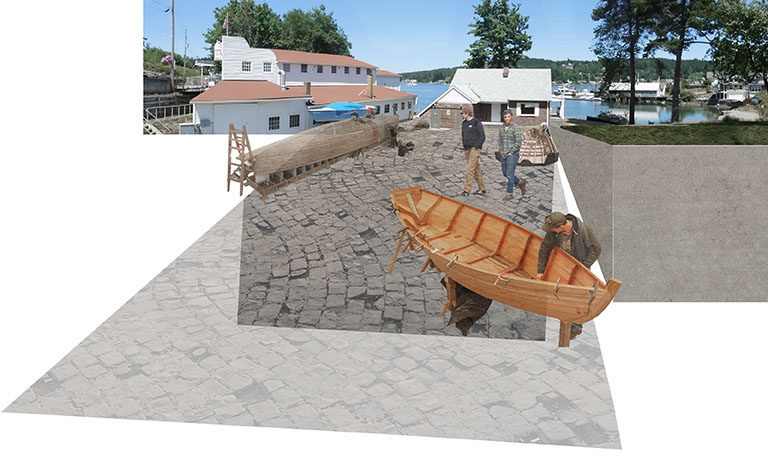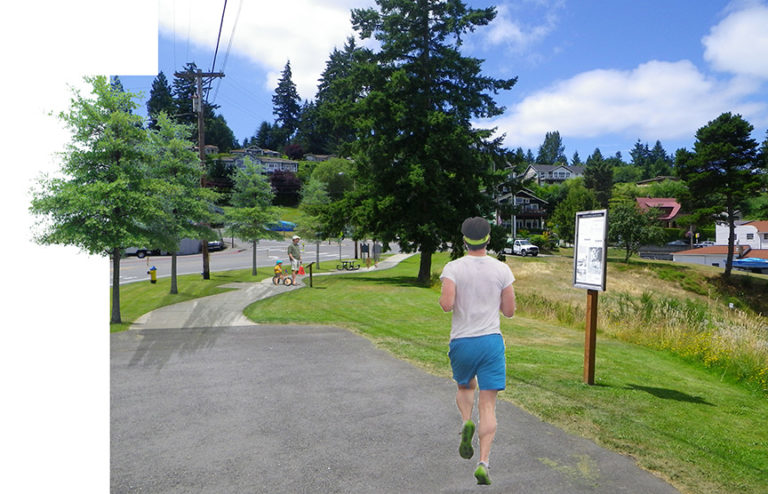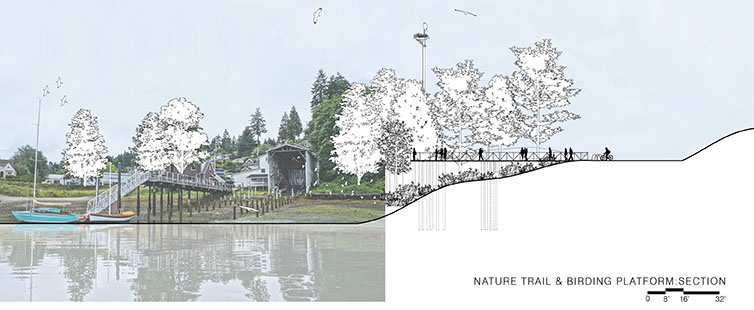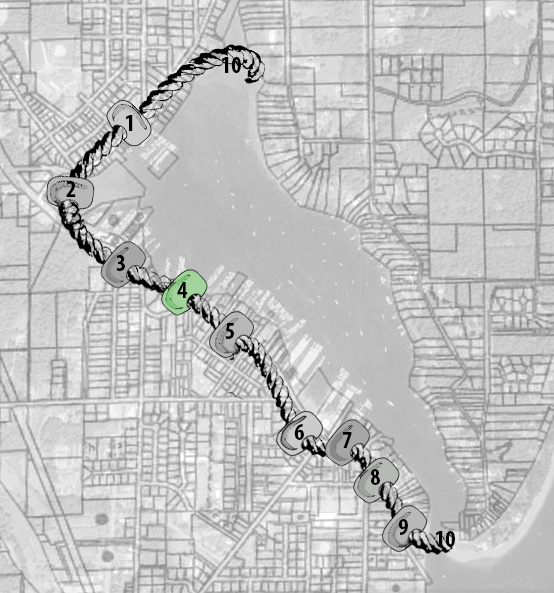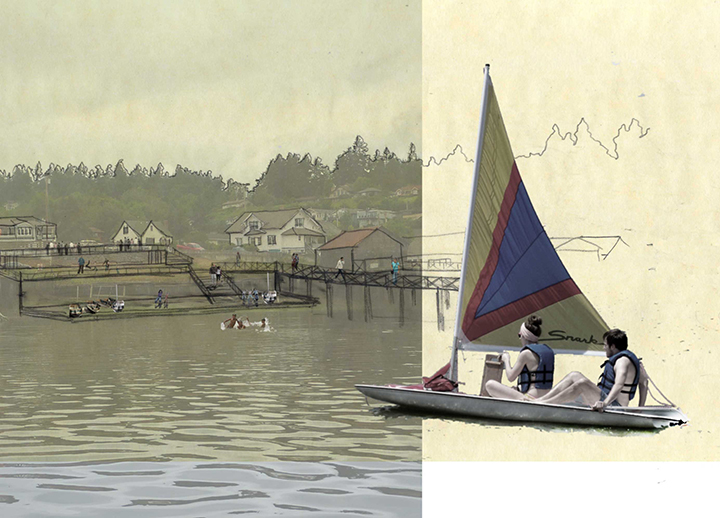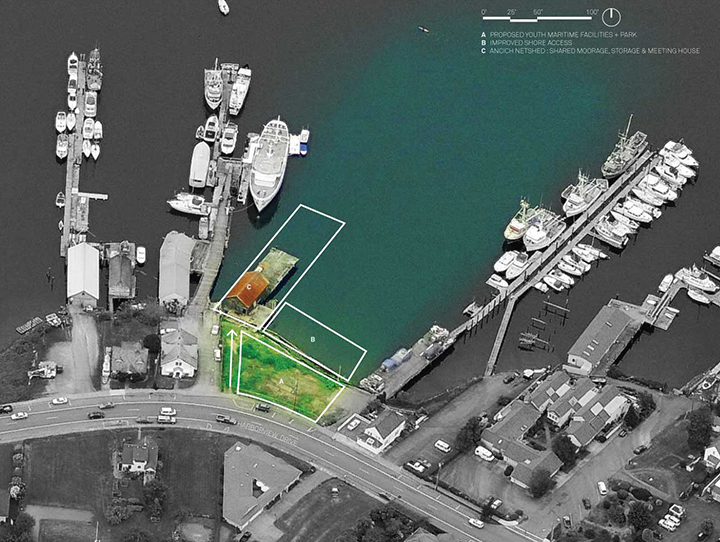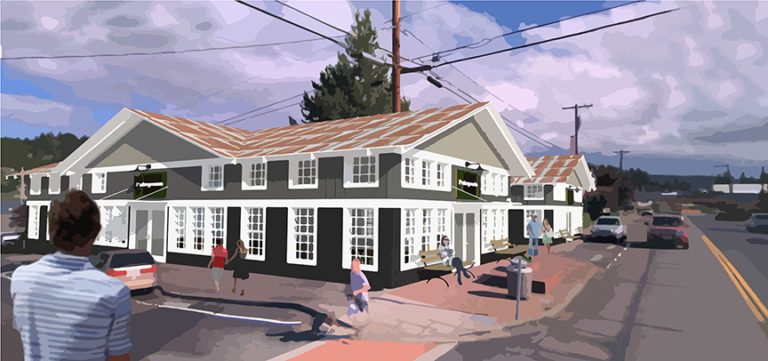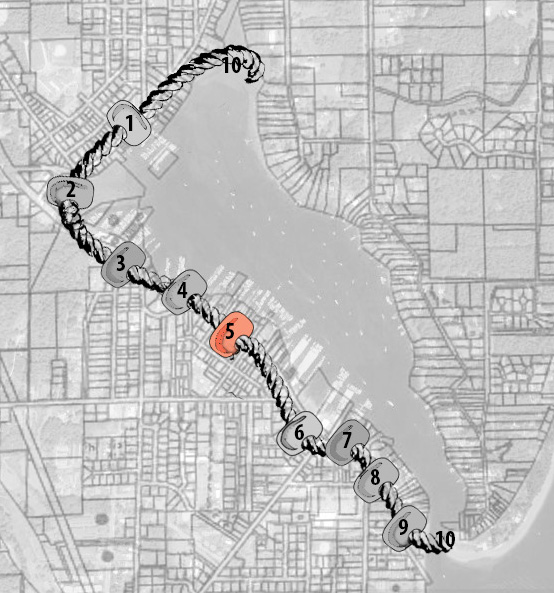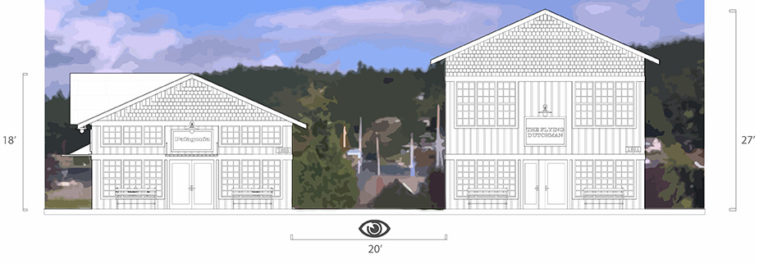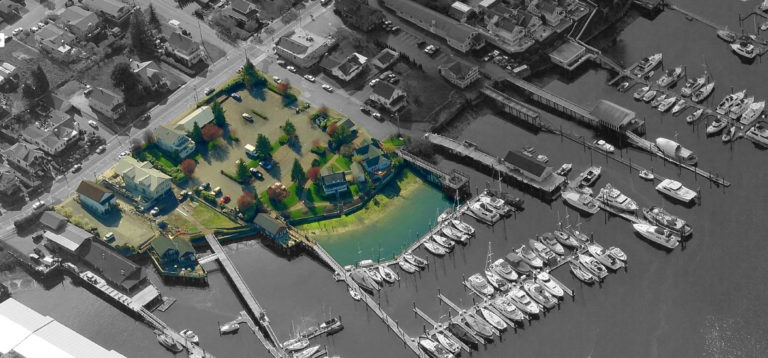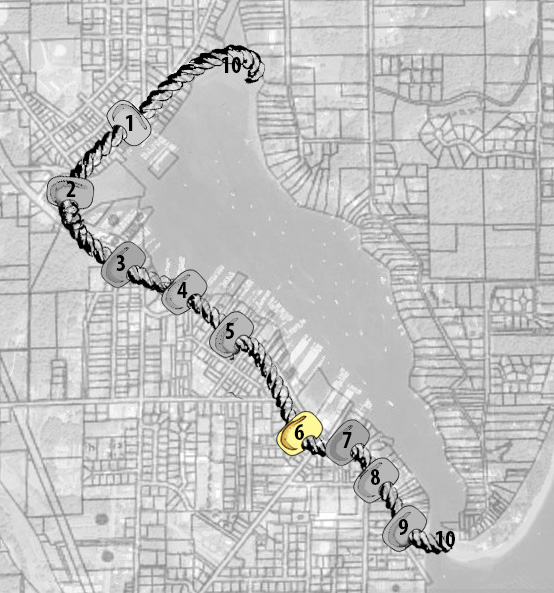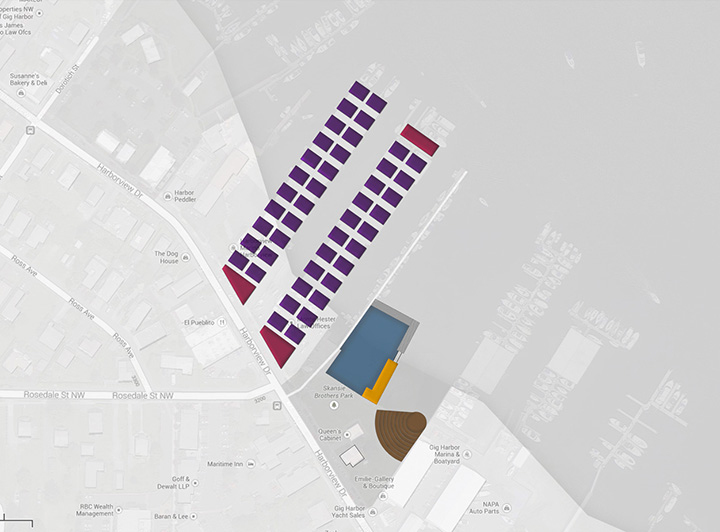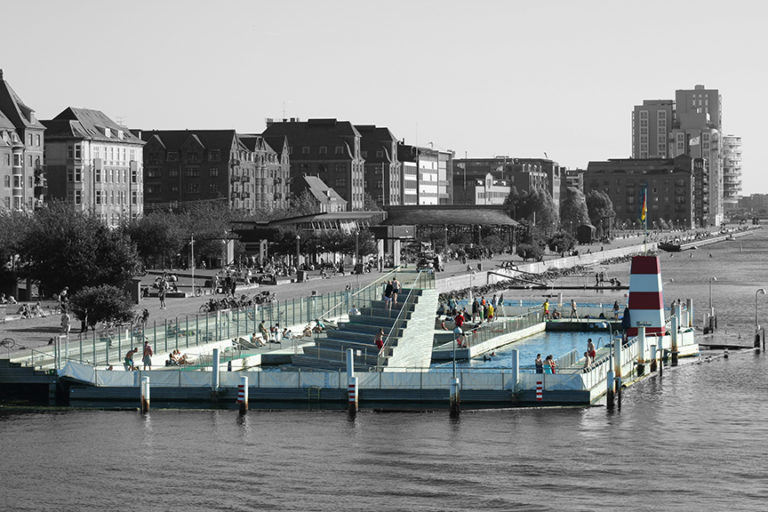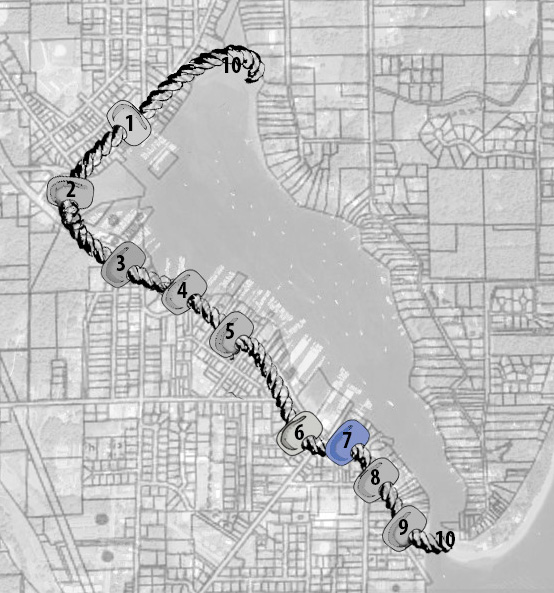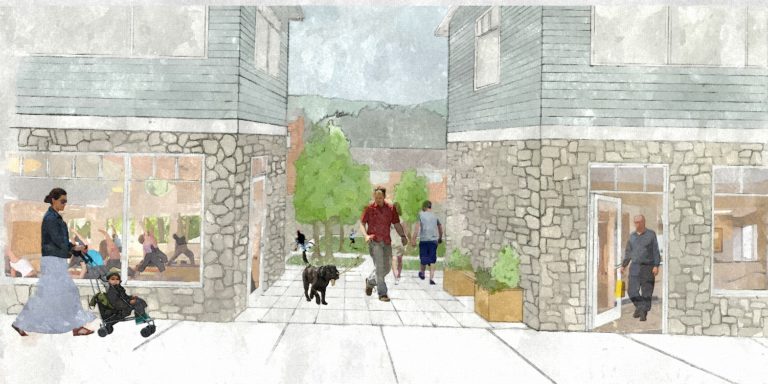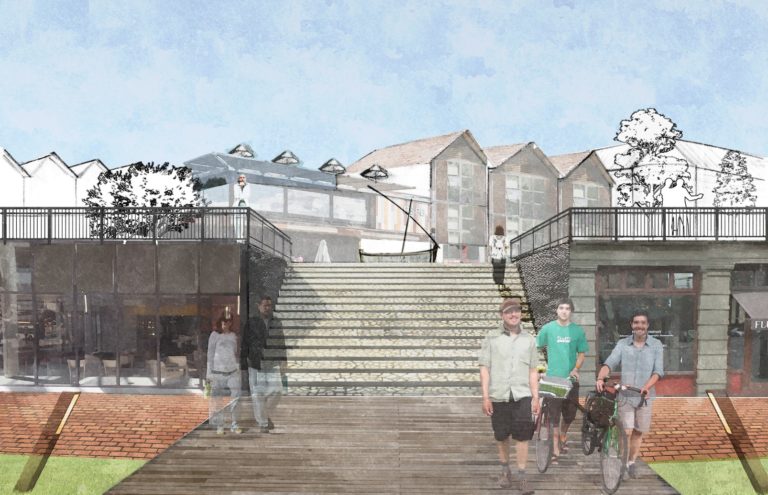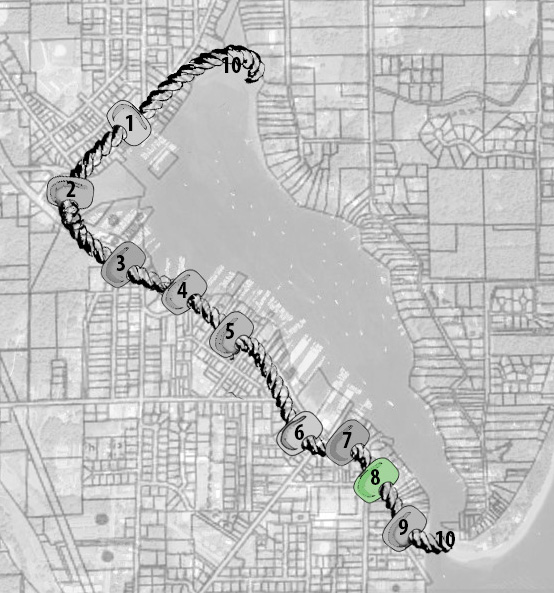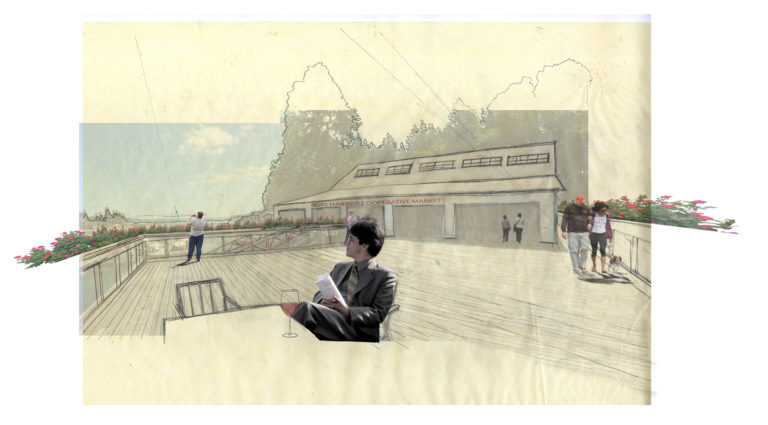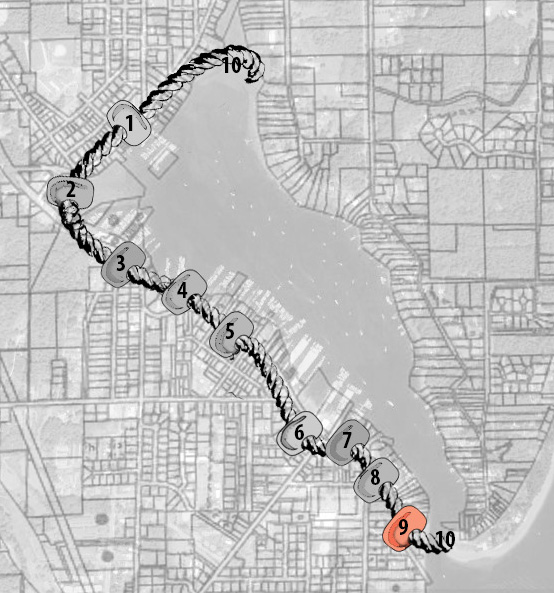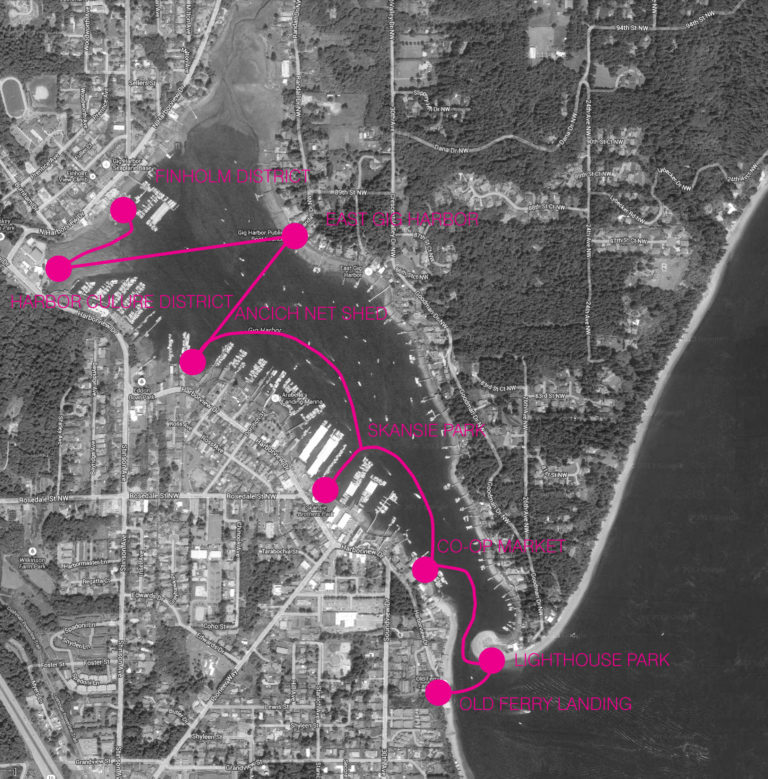Gig Harbor is located on Gig Harbor Bay in Puget Sound, across the Narrows Bridge from Tacoma. The harbor remains a working waterfront, but tourism and recreational boating, including human-powered vessels, are growing in Gig Harbor. With increasing competition from new developments apart from the historic downtown, Gig Harbor is seeking to encourage economic growth and development while maintaining its identity, respecting its heritage and anticipating its future.
 (1/33) Gig Harbor is located on Gig Harbor Bay in Puget Sound, across the Narrows Bridge from Tacoma. The harbor remains a working waterfront, but tourism and recreational boating, including human-powered vessels, are growing in Gig Harbor. With increasing competition from new developments apart from the historic downtown, Gig Harbor is seeking to encourage economic growth and development while maintaining its identity, respecting its heritage and anticipating its future.
(1/33) Gig Harbor is located on Gig Harbor Bay in Puget Sound, across the Narrows Bridge from Tacoma. The harbor remains a working waterfront, but tourism and recreational boating, including human-powered vessels, are growing in Gig Harbor. With increasing competition from new developments apart from the historic downtown, Gig Harbor is seeking to encourage economic growth and development while maintaining its identity, respecting its heritage and anticipating its future. Storefront Studio identified nine unique “districts” in Gig Harbor, each with its own character and assets. These districts, while unique, complement each other along Harborview Drive and the continuous waterfront.
Storefront Studio identified nine unique “districts” in Gig Harbor, each with its own character and assets. These districts, while unique, complement each other along Harborview Drive and the continuous waterfront. Surrounded by residential property and the waterfront, the Finholm district on the northern end of the harbor has the potential to be a bustling neighborhood commercial district.
Surrounded by residential property and the waterfront, the Finholm district on the northern end of the harbor has the potential to be a bustling neighborhood commercial district. A new public dock, a water bus system, an enhanced residential hill climb, and new parking infrastructure work together to strengthen the pedestrian and commercial activity at this end of the harbor.
A new public dock, a water bus system, an enhanced residential hill climb, and new parking infrastructure work together to strengthen the pedestrian and commercial activity at this end of the harbor.
 A bus system on the water would link the harbor by boat. A number of piers and and Harbor Bus stops would be distributed throughout the harbor.
A bus system on the water would link the harbor by boat. A number of piers and and Harbor Bus stops would be distributed throughout the harbor. The Storefront Studio seeks to enhance the great success in the ongoing development around Museum District further by proposing a “Harbor Culture District” to fully utilize the large Museum District.
The Storefront Studio seeks to enhance the great success in the ongoing development around Museum District further by proposing a “Harbor Culture District” to fully utilize the large Museum District. The Storefront Studio seeks to enhance the great success in the ongoing development around Museum District further by proposing a “Harbor Culture District” to fully utilize the large Museum District.
The Storefront Studio seeks to enhance the great success in the ongoing development around Museum District further by proposing a “Harbor Culture District” to fully utilize the large Museum District. Harbor Culture District will include Harbor History Museum, Galleries, Live/ Work spaces and research laboratory spaces for local community groups such as Harbor Wild Watch as well as satellite classrooms for regional schools.
Harbor Culture District will include Harbor History Museum, Galleries, Live/ Work spaces and research laboratory spaces for local community groups such as Harbor Wild Watch as well as satellite classrooms for regional schools. Harbor Culture District will include Harbor History Museum, Galleries, Live/ Work spaces and research laboratory spaces for local community groups such as Harbor Wild Watch as well as satellite classrooms for regional schools.
Harbor Culture District will include Harbor History Museum, Galleries, Live/ Work spaces and research laboratory spaces for local community groups such as Harbor Wild Watch as well as satellite classrooms for regional schools. Eddon Boat Park has already started its transformation from an under-utilized space into a public resource through the efforts of the city.
Eddon Boat Park has already started its transformation from an under-utilized space into a public resource through the efforts of the city. The Eddon Boat School is extended outside with a new outdoor boat building platform space. Gig Harbor’s boat building history and heritage would become an interactive event for locals, tourists, and the boat-building students.
The Eddon Boat School is extended outside with a new outdoor boat building platform space. Gig Harbor’s boat building history and heritage would become an interactive event for locals, tourists, and the boat-building students. The northern property is reimagined as a bird watching sanctuary, which has minimal impact on the existing natural environment. A causeway would lead visitors into the treeline for a natural surrounding and brings them to
The northern property is reimagined as a bird watching sanctuary, which has minimal impact on the existing natural environment. A causeway would lead visitors into the treeline for a natural surrounding and brings them to
a viewing deck over the water. The park would provide a platform for the nesting of birds such as hawks or osprey that typically build their nests on tall trees near the water. This space
would provide a safe environment for birds of prey to live in the harbor and would help
revitalize the Harbor’s environment. The northern property is reimagined as a bird watching sanctuary, which has minimal impact on the existing natural environment. A causeway would lead visitors into the treeline for a natural surrounding and brings them to
The northern property is reimagined as a bird watching sanctuary, which has minimal impact on the existing natural environment. A causeway would lead visitors into the treeline for a natural surrounding and brings them to
a viewing deck over the water. The park would provide a platform for the nesting of birds such as hawks or osprey that typically build their nests on tall trees near the water. This space
would provide a safe environment for birds of prey to live in the harbor and would help
revitalize the Harbor’s environment.







 Skansie Brothers Park is a large open park that is used frequently, with activities ranging from farmers markets to outdoor concerts.
Skansie Brothers Park is a large open park that is used frequently, with activities ranging from farmers markets to outdoor concerts. This design proposal suggests a large floating stage to accommodate the masses during events like the “Summer Sounds at Skansie”. A protected pool is placed next to the old Skansie net shed, which becomes a youth center.
This design proposal suggests a large floating stage to accommodate the masses during events like the “Summer Sounds at Skansie”. A protected pool is placed next to the old Skansie net shed, which becomes a youth center. The pool and youth center will accommodate children of all ages year round. The boat marina located North of the park becomes an area for floating houseboats or floating apartment buildings, stimulating activity and the availability of affordable waterfront housing.
The pool and youth center will accommodate children of all ages year round. The boat marina located North of the park becomes an area for floating houseboats or floating apartment buildings, stimulating activity and the availability of affordable waterfront housing. Harborview Drive presents an opportunity to add increased access and legibility to the waterfront. Program goals for this proposal include providing public access to open space and water, creating desirable and walkable areas, and maintaining and strengthening identity with strategic design choices.
Harborview Drive presents an opportunity to add increased access and legibility to the waterfront. Program goals for this proposal include providing public access to open space and water, creating desirable and walkable areas, and maintaining and strengthening identity with strategic design choices. The proposed Village Center for Gig Harbor invites a new paradigm for the city. While both density and lack of character are legitimate concerns with any new development, the design of the buildings and relating open space features highlights the existing features of the city. Familiar characteristics are used as part of the fabric to reinvigorate and maintain the downtown core by creating memorable gateways, increasing open space area, and encouraging year-round use.
The proposed Village Center for Gig Harbor invites a new paradigm for the city. While both density and lack of character are legitimate concerns with any new development, the design of the buildings and relating open space features highlights the existing features of the city. Familiar characteristics are used as part of the fabric to reinvigorate and maintain the downtown core by creating memorable gateways, increasing open space area, and encouraging year-round use. A newly established pier entrance will provide a sense of identity for Gig Harbor. Open plazas are used to create comfortable atmospheres that are inviting by clearly defining retail and recreational areas. Alleys are used as permeable entrances that invite pedestrians into and out of the designated open space areas. Pedestrian walkways give people a place to explore that is free of vehicular traffic.
A newly established pier entrance will provide a sense of identity for Gig Harbor. Open plazas are used to create comfortable atmospheres that are inviting by clearly defining retail and recreational areas. Alleys are used as permeable entrances that invite pedestrians into and out of the designated open space areas. Pedestrian walkways give people a place to explore that is free of vehicular traffic. The Washington Egg & Poultry Co-op Building (aka The Boat Barn) was built in 1925 to support member farmers in trading eggs and poultry for farming supplies. Freight boats docked at the pier to unload hay, feed, and supplies at the co-op warehouse. Local farmers used the co-op to purchase farm goods and distribute their eggs and poultry to regional, national, and international markets. The co-op closed in 1956. In 1975, the building was converted to a commercial marina and boat barn. Today the structure includes a marine upholstery business, marketing and branding firm, and boat design services.
The Washington Egg & Poultry Co-op Building (aka The Boat Barn) was built in 1925 to support member farmers in trading eggs and poultry for farming supplies. Freight boats docked at the pier to unload hay, feed, and supplies at the co-op warehouse. Local farmers used the co-op to purchase farm goods and distribute their eggs and poultry to regional, national, and international markets. The co-op closed in 1956. In 1975, the building was converted to a commercial marina and boat barn. Today the structure includes a marine upholstery business, marketing and branding firm, and boat design services. The Boat Barn retains its historic structural character yet is currently under-utilized and under-valued. Ideally located close to the downtown center, the structure offers economic development opportunities, community harbor access, and a historical link to Gig Harbor’s past.
The Boat Barn retains its historic structural character yet is currently under-utilized and under-valued. Ideally located close to the downtown center, the structure offers economic development opportunities, community harbor access, and a historical link to Gig Harbor’s past. Located at the mouth of the harbor, this lookout and beach would be accessible to the local community. The pier provides location for people to access the beach and to admire views of Mount Rainier and the harbor.
Located at the mouth of the harbor, this lookout and beach would be accessible to the local community. The pier provides location for people to access the beach and to admire views of Mount Rainier and the harbor. A water taxi would provide local access to the lighthouse park for those who don’t have a boat. The lighthouse could be one of several stops in the water taxi system.
A water taxi would provide local access to the lighthouse park for those who don’t have a boat. The lighthouse could be one of several stops in the water taxi system. The lighthouse, located across the harbor’s neck from the pier, is a destination for human powered watercraft. Providing activity near the lighthouse would create a destination for boaters along Puget Sound.
The lighthouse, located across the harbor’s neck from the pier, is a destination for human powered watercraft. Providing activity near the lighthouse would create a destination for boaters along Puget Sound.
